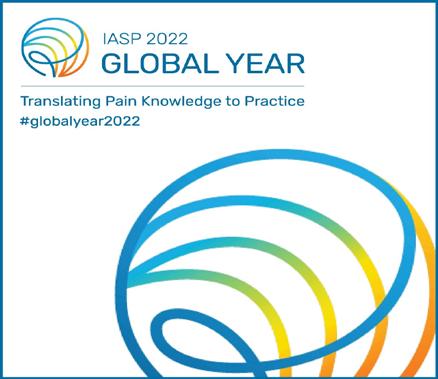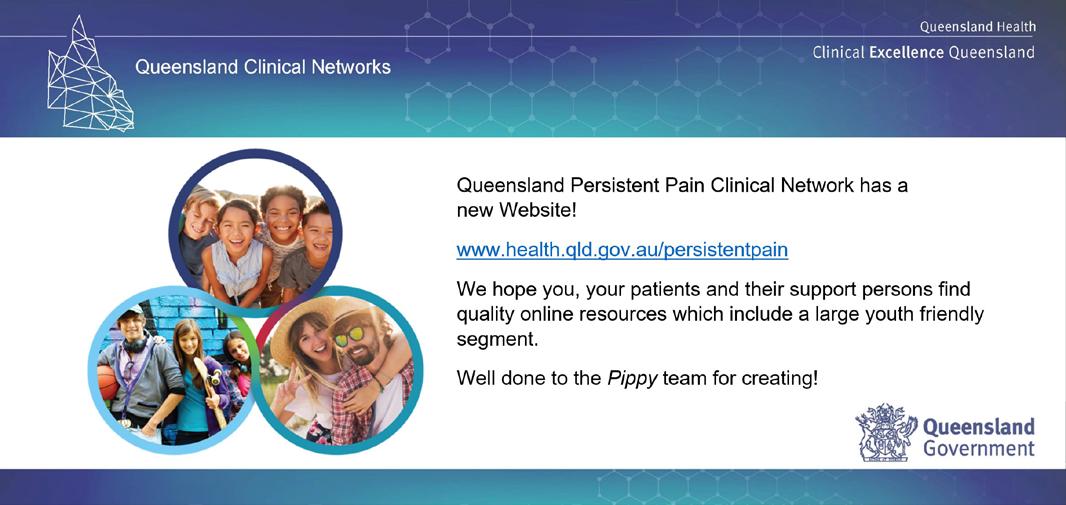
3 minute read
Which passengers are on your bus? A taxonomy of the barriers adolescents with chronic pain face in achieving functional recovery
from APS OCT22 eNews
by auspainsoc
Journal Reference: Jacobs K, Smith A, Heathcote L, & Caes L (2020). Which passengers are on your bus? A taxonomy of the barriers adolescents with chronic pain face in achieving functional recovery. European Journal of Pain, 25(1), 348-358.
DOI: 10.1002/ejp.1673
Reviewer: Dr Emily de Jager, Psychologist, Children’s Chronic Pain Management Service, Department of Anesthesia, Royal Children’s Hospital
Review of article
Participants were 41 adolescents aged 10-19 years (80% female) attending clinical psychology assessments as part of their intensive interdisciplinary pain treatment (IIPT) at the Oxford Centre for Children and Young People in Pain, in Oxford, UK. Participants reported a wide range of chronic pain symptoms including widespread musculoskeletal pain, localized musculoskeletal pain, complex regional pain syndrome and abdominal pain. The study used retrospective analysis of collected data, thus participants were unaware of the study when providing the clinical data.
Aims
The aim of the study was to gain a comprehensive insight into adolescents’ perceptions of the barriers they need to overcome to engage with age-appropriate activities to achieve functional recovery (e.g., full school engagement, engagement in sports, social engagement).
Method
Participants completed the ‘passenger on the bus metaphor’ exercise in their first session of a two- or three-week IIPT program. In this exercise, participants identify and describe their individual perceived barriers (discussed as ‘passengers’ on their bus) that prevent them from engaging in age-appropriate functional activities. The metaphor asks the participants to imagine that they are driving a bus towards their valued direction, the passengers on the bus represent hindrances or the participants thoughts and feelings that make it more difficult or prevents them from reaching their valued direction. The metaphor was introduced by the psychologist and a worked example was provided, before the psychologist then walked the participant through the steps to apply the metaphor to their own experience and identify their own barriers to engagement. Although this was done in the first session of an IIPT, the psychologist had several previous sessions with the participants to build rapport.
Results
The researchers applied a retrospective analysis of the clinical data. Qualitative methods were used and found seven domains representing different barriers adolescents with chronic pain face to engage with daily age-appropriate activities. The domains were: ‘Physical constraints’, ‘Being fed up’, ‘Low self-confidence/self-esteem’, ‘Perfectionism’, ‘Avoidance of engagement with pain’, ‘Social barriers’, and ‘Feelings’. There were four subdomains within ‘Feelings’: ‘Sadness’, ‘Anger and frustration’, ‘Guilt’, and ‘Anxiety’.
Conclusions
The findings show a variety of perceived barriers which interfered with engagement in age-appropriate activities and progress within IIPT. The ‘Passenger on the bus’ metaphor appeared to be an effective way to engage adolescents in a sensitive conversation regarding the barriers they experience. Awareness of these barriers may help therapists working in a IIPT to individualise treatment approaches accordingly.
Reviewer’s critique & take-home messages
The authors provided an interesting discussion relating their findings to both the
Interpersonal Fear Avoidance Model and the Children’s Health Belief Model, providing a logical rationale for how the current findings aligned with both models. It would be interesting to consider whether the patient’s stage of change (or other psychological constructs, such as locus of control) may have played a role in the types of barriers they perceived.
Additionally, there seemed to be a large range of specific, individual barriers under each of the barrier domains, particularly ‘social barriers’. Assessment of the individual and their specific barriers is still needed but this gives a nice framework for clinicians to think about the different domains of barriers and types of questions to be asking patients.
The authors considered some of the limitations to the study including how the biases of the single psychologist who assessed all patients may have affected the results. I also wonder how generalizable the results would be to an outpatient service where the patients are not receiving quite the intensive treatment of an inpatient stay and whether there would be different barriers that affected outpatients, given they are returning to family and school environments.
This study demonstrates an interesting, novel way of exploring perceived barriers to treatment for adolescents engaging in an intensive interdisciplinary pain management program. This is an important topic, given how commonly it is reported in the literature and anecdotally. Understanding these barriers and having a framework or guideline to better help clinicians to assess these barriers will hopefully help to build rapport and trust and allow a more individualized treatment approach, hopefully improving engagement.
Declaration
There are no conflicts of interest to declare in reviewing this article.




